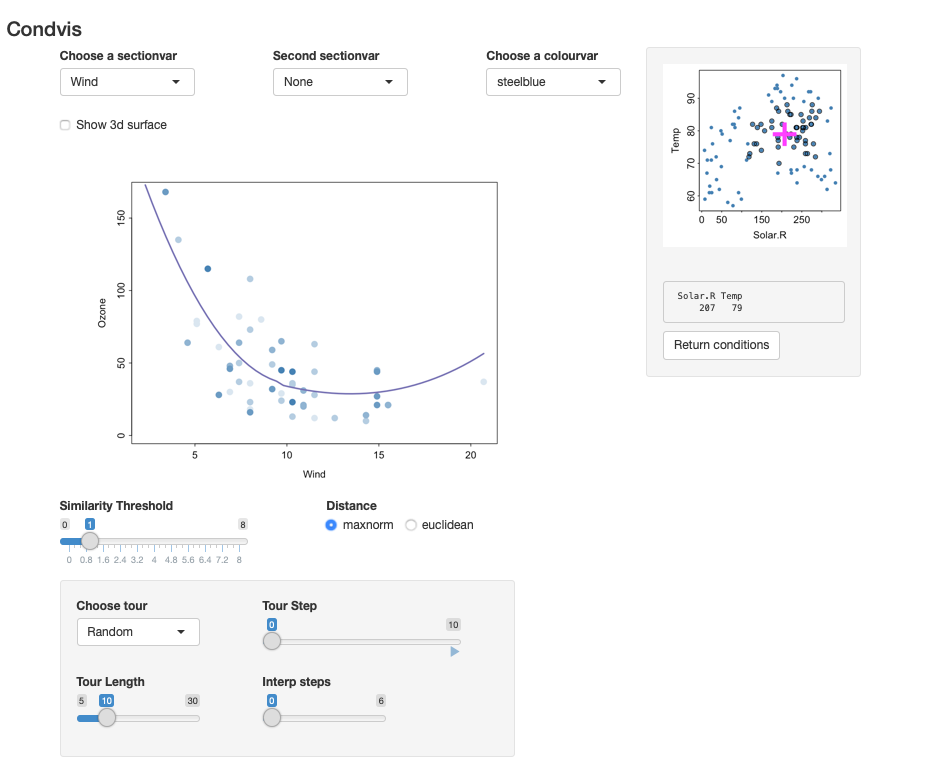 Check out the
vignette
Check out the
vignette Introduction to condvis2 for more information and
details.The hardware and bandwidth for this mirror is donated by METANET, the Webhosting and Full Service-Cloud Provider.
If you wish to report a bug, or if you are interested in having us mirror your free-software or open-source project, please feel free to contact us at mirror[@]metanet.ch.
The goal of condvis2 is to visualise prediction models via shiny. Predictions are generated from one or more model fits. Low-dimensional visualisations are constructed showing the relationship between the response and one or two (section) predictors, conditional on the remaining predictors. The section predictors and conditioning values are selected within the shiny app.
You can install condvis2 from github with:
# install.packages("devtools")
devtools::install_github("cbhurley/condvis2")This is a basic condvis example.
We will use the airquality data built in to R.
ozone <- na.omit(airquality)fit <- loess(Ozone~Wind+Solar.R+Temp, data=ozone)
condvis(ozone, fit, sectionvars="Wind", conditionvars=c("Solar.R", "Temp"))The result is shown in the screenshot below. It shows the loess
prediction for Wind, conditional on values of the other two
predictors.
Only observations whose Solar.R and Temp values are near (207,79) are
shown. The user can move around the pink cross to see how the prediction
varies.
 Check out the
vignette
Check out the
vignette Introduction to condvis2 for more information and
details.
library(ks)
data(iris)
irisf <- kde(x=iris[,1:3])
condvis(data = iris, model = list(kde=irisf),
sectionvars= c("Sepal.Length", "Sepal.Width"),
conditionvars= "Petal.Length", density=T)The result is shown in the screenshot below. It shows the estimated density of two variables conditional on the third.

Catherine B. Hurley, Mark O’Connell, Katarina Domijan. (2021) Interactive slice visualization for exploring machine learning models. arXiv 2101.06986.
Mark O’Connell, Catherine Hurley, Katarina Domijan. (2017) Conditional Visualization for Statistical Models: An Introduction to the condvis Package in R. Journal of Statistical Software 81(5) 1–20.
These binaries (installable software) and packages are in development.
They may not be fully stable and should be used with caution. We make no claims about them.